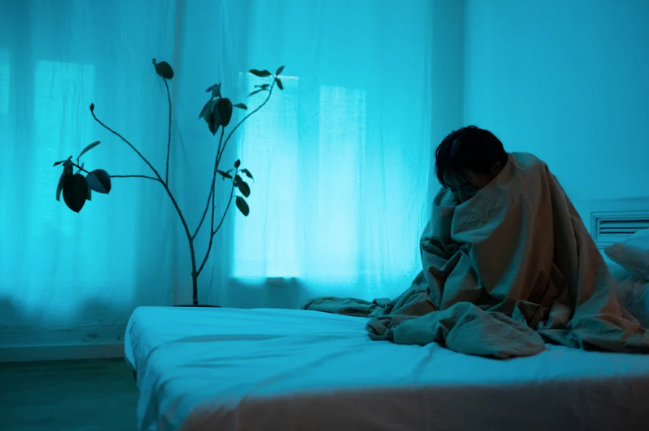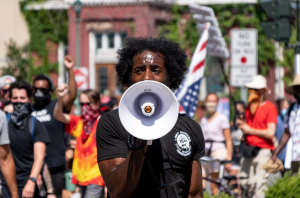The Myth of Mental Illness and the Truth About Mental Health: A Man’s Journey to Freedom

Part 3 – Being Bipolar: Living in a World of Fire and Ice
In Part 1, I began sharing my father’s experience when he was committed to the mental hospital. In Part 2, I described his experience in a very different kind of hospital. I spent most of my life living in terror of becoming mentally ill and ending up in a mental hospital like my father. Subconsciously, I thought that if I learned enough and became a “mental health professional” I could keep myself safe from getting “the disease.” I was forced to confront my own problems in a surprising way.
One of our adult sons was being treated for his drug and alcohol problems. My wife, Carlin, and I were invited to attend the program at a special “family day” where we learned about recovery and how addictions impacted families. As part of the education we received during our visit, we were told that often family members suffer from depression when a family member is dealing with addictions.
We were all given a standard Depression Questionnaire to fill out. My wife scored “high” indicating she would do well to get a more complete evaluation for depression. I scored “low” on the test, indicating I did not have depression. When we returned home, Carlin went to see a psychiatrist who talked to her and did a more complete workup. He concluded that she did have depression and prescribed an anti-depressant. Her mood improved and some of the conflicts we were having in our marriage also improved.
Carlin felt I also had mental problems and that I might also want to see her doctor. She thought that my irritability and anger might be an indication of depression. I was resistant to the idea. I reminded her that I had scored low on the Depression Questionnaire we had taken at our son’s treatment program. She reminded me that the test didn’t prove anything, just suggested it might be good to get a more complete evaluation.
I was still resistant to seeing a doctor. Deep down I was afraid of what he might find. But I eventually went to see her doctor who diagnosed me as having a problem he called bipolar disorder of manic-depressive illness. When I returned home from the appointment, Carlin was anxious to hear what he said.
I told her what the doctor had told me and also told her that I didn’t like the doctor, felt he didn’t really understand the stresses I was under, and told her I didn’t think I needed help from him. I told her, “I want a second opinion,” which really meant quit nagging. I’m fine. I’m glad you got help for your depression, but I’m fine. Leave me alone.
Carlin was furious, but still kind.
“Jed, you want a second opinion. I’ll give you mine. I’m not the only one in this family with a problem. You’ve got one too and I hope you do see a doctor who can help you.”
I finally did see another doctor, this one a woman who I felt did, indeed, “get me.” She did a much more complete assessment than the other doctor, was not dogmatic in her approach and saw healing as a collaboration between two people with a similar goal. Dr. Betty Lacy was a different kind of psychiatrist than anyone I had ever met and she opened my eyes, my mind, and my heart.
She helped me understand that my father likely suffered from bipolar disorder, but it was never properly treated and that it was a difficult problem to understand. She felt I also had the same problem. She suggested I get a book by Francis Mark Mondimore, MD, a professor of psychiatry and behavioral sciences at the Johns Hopkins University School of Medicine. In Bipolar Disorder: A Guide for You & Your Loved Ones, Dr. Mondimore describes bipolar disorder this way:
“Bipolar disorder is the chameleon of psychiatric disorders, changing its symptoms from one patient to the next and from one episode of illness to the next even in the same patient. It is a phantom that can sneak up on its victim, cloaked in the darkness of melancholy, but then disappear for years at a time—only to return in resplendent but fiery robes of mania.
Although both depression and mania had been described over two millennia previously by Greek and Persian physicians—several of whom thought the conditions were linked in some way—it wasn’t until the early part of the twentieth century that a German psychiatrist, Emil Kraepelin, convincingly presented the idea that these opposite conditions were two sides of one pathological coin, the two profiles of a Janus-faced disease that he called ‘manic-depressive insanity.’”
This was helpful, but what really got my attention was when I read a book by one of the most respected experts on bipolar disorders in the world, Kay Redfield Jamison. In her book, An Unquiet Mind: Memoir of Moods and Madness, she helped me see that even a professional, with a world-wide reputation in the mental health field, can have problems like mine and live to talk about them. In the book’s prologue she offers this revealing portrait of her behavior against the background of her professional life:
“Within a month of signing my appointment papers to become an assistant professor of psychiatry at the University of California, Los Angeles, I was well on my way to madness. Within three months I was manic beyond recognition and just beginning a long, costly personal war against a medication that I would, in a few years’ time, be strongly encouraging others to take. My illness, and my struggles against the drug that ultimately saved my life and restored my sanity, had been years in the making.”
I knew this was a book I needed to read from a doctor I knew could help me. As I read more about her experiences I began to see myself. There was one description that ripped me apart. In the epilogue she sums up her experiences in a way that gave me the push I needed to get past my resistance to get the help I had so long been afraid to get.
“Others imply that they know what it is like to be depressed because they have gone through a divorce, lost a job, or broken up with someone. But these experiences carry with them feelings. Depression, instead, is flat, hollow, and unendurable. It is also tiresome. People cannot abide being around you when you are depressed.”
With the following words she absolutely nailed what was going on inside me. She was speaking my truth in a way I had never been able to articulate or share.
“You’re irritable and paranoid and humorless and lifeless and critical and demanding, and no reassurance is ever enough. You’re frightened, and you’re frightening, and ‘you’re not at all like yourself but will be soon,’ but you know you won’t.”
All these words resonated with me. I was irritable, paranoid, humorless, lifeless, critical, and demanding. No matter what my wife, Carlin, did to show me she loved me, it was never enough. I knew I was frightened inside, but I had to admit I was also frightening to the people who loved me the most.
With doctor Jamison’s personal sharing and Dr. Lacy’s practical support, I started on a long journey of healing.
I was prescribed a medication, Depakote, to deal with the out-of-control “ups” that would have me doing one project after another without needing to sleep. I was also prescribed an anti-depressant, Zoloft, to deal with the subsequent “downs” when things would eventually crash and I would become irritable, angry, and depressed. Within three weeks my bipolar illness was beginning to come under control. It took more than seven years before my illness was fully in remission.
Like Dr. Jamison, at first, I fought staying on the medications. I was afraid I would lose my creative edge, that my feelings would be blunted, and I would be sentenced to a life without any real highs. I found that wasn’t true. On medications, I was just as emotional and creative and I actually got more done, wrote more books, did more work. When you don’t have to deal with the emotional crashes that follow the highs, life is much more enjoyable, stable, and fulfilling.
But it wasn’t just the medications that saved my marriage and likely saved my life, though they certainly helped. The psychotherapy I did with my doctor allowed me to explore the roots of my problems and to track the day-to-day triggers that would set me off. Ultimately, the greatest healing comes from learning to love more deeply and to be loved in return.
Working with Dr. Lacy I never felt inferior. I never felt like I was “mentally ill.” She treated me like a man who was suffering, but who could help himself and improve my marriage. She was more like a health coach than a “know-it-all expert” who had all the answers.
I learned that it’s almost impossible to love a person who is in the throes of bipolar disorder. Our lives are too chaotic and our emotional edges can cut deeply and hurt those we love the most. It’s also impossible to love ourselves. There’s a fragility to our lives that keeps us in constant terror that our world will collapse, even as we spend more and more energy putting on the mask of jovial well-being.
Healing from bipolar disorder takes three elements:
- People who love you and give you the “tough love” necessary for you to get help.
- A good doctor who can evaluate your need for medications, but doesn’t see you as having a disease.
- A psychotherapist (I was lucky that my doctor also did therapy) who can help you understand the stresses that trigger your ups and downs and help heal the wounds from the past that feed your present illness.
It’s not an easy journey for the person going through it, for the family and friends who want to support their loved ones, or for the professionals who work with us. But it can be done and lives are saved every day by those with the courage to deal with bipolar disorder and other mental illnesses. I look forward to your comments and hearing about your own experiences.
I will continue the story in Part 4. If you’d like to hear more about men’s mental health and other important issues, I invite you to join our online-community and subscribe to our weekly newsletter. It is free and you can easily unsubscribe if you ever find it no longer meets your needs.







